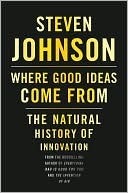More on this book
Community
Kindle Notes & Highlights
All of us live inside our own private versions of the adjacent possible. In our work lives, in our creative pursuits, in the organizations that employ us, in the communities we inhabit—in all these different environments, we are surrounded by potential new configurations, new ways of breaking out of our standard routines.
The trick is to figure out ways to explore the edges of possibility that surround you. This can be as simple as changing the physical environment you work in, or cultivating a specific kind of social network, or maintaining certain habits in the way you seek out and store information.
innovative environments are better at helping their inhabitants explore the adjacent possible, because they expose a wide and diverse sample of spare parts—mechanical or conceptual—and they encourage novel ways of recombining those parts. Environments that block or limit those new combinations—by punishing experimentation, by obscuring certain branches of possibility, by making the current state so satisfying that no one bothers to explore the edges—will, on average, generate and circulate fewer innovations than environments that encourage exploration.
The trick to having good ideas is not to sit around in glorious isolation and try to think big thoughts. The trick is to get more parts on the table.
His day job was “data acquisition and control”; building a global communications platform was his hobby. Because the two shared some attributes, his superiors at CERN allowed Berners-Lee to tinker with his side project over the years.
If Google can give its engineers one day a week to work on anything they want, surely other organizations can figure out a way to give their employees dedicated time to immerse themselves in a network of new ideas.
If the commonplace book tradition tells us that the best way to nurture hunches is to write everything down, the serendipity engine of the Web suggests a parallel directive: look everything up.


